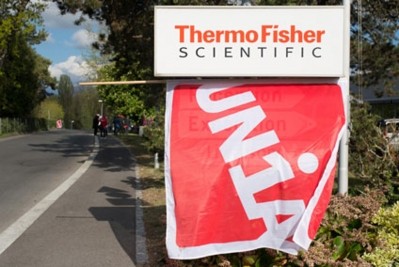Thermo Fisher Scientific broadens specialist testing center

The Food Safety Response Center in Dreieich, Germany, was opened in 2010 to aid governments and businesses facing an unknown food safety threat involving chemical contaminants.
One example was the development of a faster and more accurate method for detecting residue levels of carbendazim in oranges and orange juice in 2012 than the technique that was being used at the time by the US FDA to test Brazilian imports.
In 2014 the firm decided to broaden its use by creating the Special Solutions Center.
It gathered applications specialists from different fields, all focused towards development, validation and customer support in routine application areas, mainly food and environmental.
The move was to provide application and method development support to customers across more areas and increase flexibility and response times.
Michal Godula, manager of Thermo Fisher Scientific’s Special Solutions Center, said the team is made up of nine specialists with different focus areas.
“The main area of interest is chromatography and mass spectrometry but we are also able to support specialized areas such as hyphenated techniques (IC-MS, IC-ICP-MS), special HPLC detectors (electrochemical, corona aerosol discharge etc.) and automated sample preparation tools like accelerated solvent extraction,” he told FoodQualityNews.
“The main interest of the group is always to provide our customers with complete solutions of their analytical problems, whether in residue analysis (pesticide analysis methods, water analysis according to EU Water Framework Directive) or even searching for solutions in new challenging areas. For example, analyses of very polar pesticides like glyphosate in environmental and drinking waters.”
Godula has worked at Thermo Fisher Scientific since 2008 and held various application and marketing roles in the food safety and environmental markets.
Non-targeted analysis is rapidly growing area
The center has done multiple projects in the last two years including development of complete methods for total analysis of pesticide residues by combined GC and LC/MS.
It does not offer any support in microbial contamination testing.
“In the case of LC/MS we offer the choice between traditional MS/MS approach as well as modern high resolution accurate mass (HRAM) screening, identification and confirmation,” said Godula.
“We have developed a quick and simple method for mycotoxins analysis in foods that allows analysis of most of the regulated mycotoxins with easy dilute-and-shoot approaches. We have also explored the field of hyphenation of ion chromatography coupled to mass spectrometry to address issues with the analysis of very polar pesticides and contaminants.
“And finally, we spent a significant amount of time on searching for the most suitable approaches to address the need for non-targeted analysis. This is a rapidly growing area, yet still unexplored – mainly due to its complexity.”
The center has a team of specialists responsible for advanced method and application development in routine application areas and serving the Europe, Middle East and Africa (EMEA) territory.
It focuses on contaminants and residues and the analysis of nutritional components (carbohydrates, vitamins etc.).
Chemical vs bacterial incident
When asked about important steps for reacting to a chemical incident or bacterial one, Godula said in both cases a quick answer is needed.
“In the case of chemical analysis it is essential to provide an answer about the possible contaminations in a timely manner, in many instances below 24 hours. This is a very challenging requirement, considering the variability of potential contaminants and the samples to be analyzed.
“Also, in many cases the question about potential contamination is not very specific and reduces down to “Is my sample OK?” giving a clear answer is of course very difficult.
“In case of bacterial contamination, the main issue is the preparation of samples and allowing the bacteria to grow to detectable levels. Although significant progress has been made, this initial step still remains the biggest hurdle.
“Considering this, I believe we can provide answers faster in our area of chemical analysis.”
Godula said the aim is to expand capabilities towards customer requirements.
“Not only on the side of the portfolio of methods developed but also having enough resources to satisfy our customer’s needs,” he said.
“Our final goal is to be able to have sufficient portfolio of methods developed, and being able to easily and quickly transfer those methods into customer’s labs, and via application focused training, to help our customers to quickly adopt new methodologies and techniques and to leverage their success on these backgrounds.”

























